Darwin's Theory Of Evolution Book
What is Darwin's Theory of Evolution?
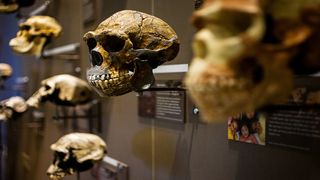
The Theory of Evolution by natural selection was get-go formulated in Charles Darwin's book "On the Origin of Species (opens in new tab)" published in 1859. In his book, Darwin describes how organisms evolve over generations through the inheritance of physical or behavioral traits, as National Geographic (opens in new tab) explains. The theory starts with the premise that within a population, there is variation in traits, such equally beak shape in one of the Galapagos finches Darwin studied.
According to the theory, individuals with traits that enable them to adapt to their environments will help them survive and take more offspring, which will inherit those traits. Individuals with less adaptive traits will less frequently survive to laissez passer them on. Over fourth dimension, the traits that enable species to survive and reproduce will go more frequent in the population and the population will change, or evolve, according to BioMed Central (opens in new tab). Through natural selection, Darwin suggested, genetically various species could ascend from a common antecedent.
Darwin did not know the machinery past which traits were passed on, according to National Geographic. He did non know nearly genetics, the machinery past which genes encode for sure traits and those traits are passed from one generation to the next. He also did not know about genetic mutation, which is the source of natural variation. Just future research past geneticists provided the mechanism and additional prove for evolution past natural selection
What is natural pick?
Darwin chose the term "natural selection" to be in contrast with "bogus option," in which animal breeders select for particular traits that they deem desirable. In natural choice, information technology's the natural environs, rather than a human beingness, that does the selecting.
Put simply, the theory of evolution by ways of natural selection can exist described as "descent with modification," said Briana Pobiner (opens in new tab), an anthropologist and educator at the Smithsonian National Museum of Natural History in Washington, D.C., who specializes in the study of human origins. The theory is sometimes described as "survival of the fittest," simply that label can be misleading, Pobiner said. Here, "fitness" refers not to an organism'southward force or athleticism but rather its ability to survive and reproduce.
Natural selection can change a species in pocket-sized means, causing a population to change color or size over the grade of several generations, according to The Natural History Museum (opens in new tab). When this procedure happens over a relatively brusque menses of time and in a species or modest group of organisms, scientists telephone call it "microevolution."
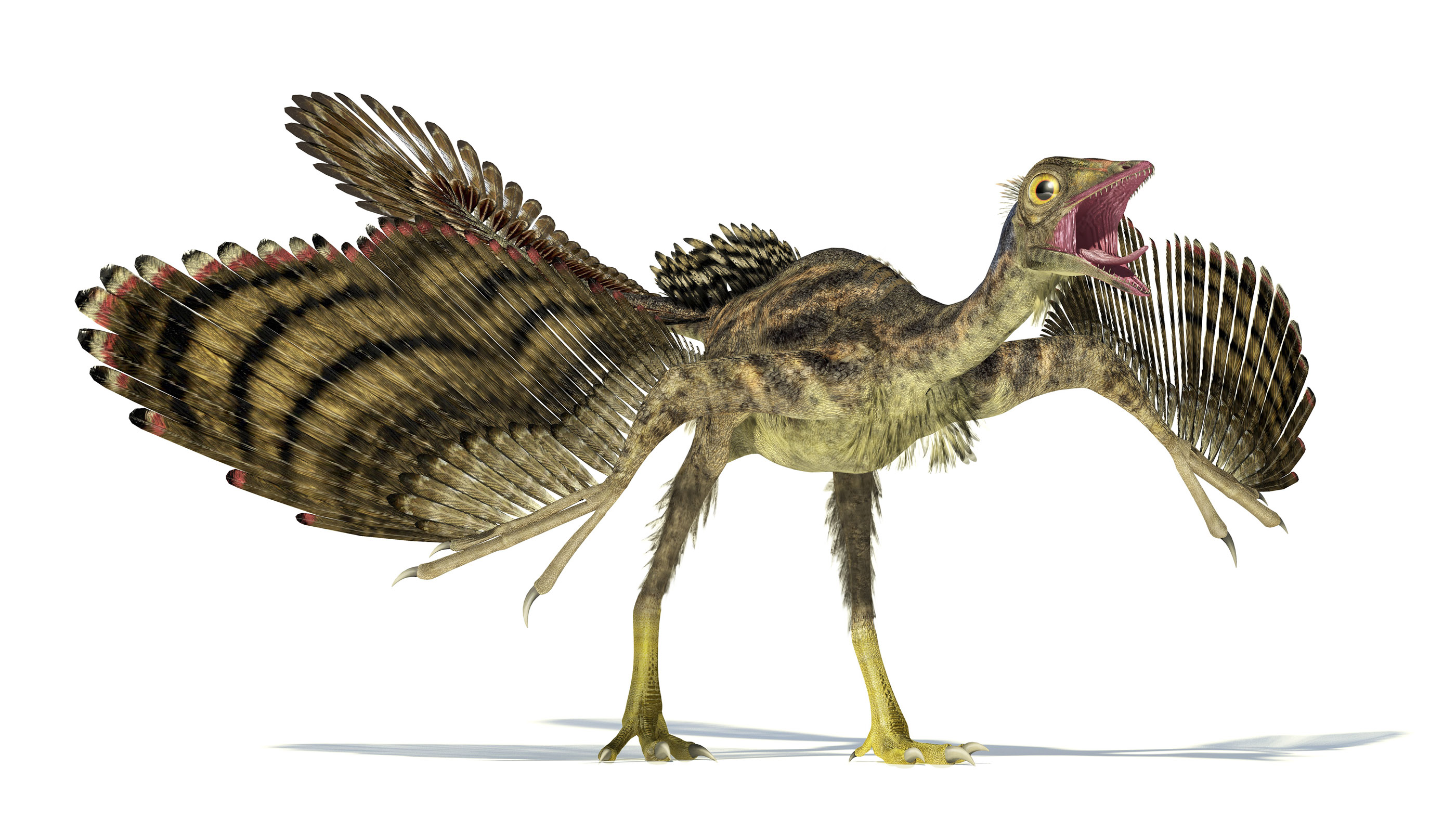
(opens in new tab)
But when given enough time and accumulated changes, natural selection can create entirely new species, a process known as "macroevolution," according to Derek Turner and Joyce C. havstad in "The Philosophy of Macroevolution (opens in new tab)." This long-term process is what turned dinosaurs into birds, amphibious mammals (such as an animate being called Indohyus) into whales and a common ancestor of apes and humans into the people, chimps and gorillas we know today.
Darwin besides described a class of natural option that depends on an organism's success at attracting a mate — a process known as sexual selection, according to Nature Education (opens in new tab). The colorful plumage of peacocks and the antlers of male person deer are both examples of traits that evolved under this type of selection.
How did whales evolve?
One of the all-time examples scientists accept of natural selection, is the development of whales. Past using Darwin's theory as a guide, and understanding how natural selection works, biologists adamant that the transition of early whales from state to h2o occurred in a series of predictable steps.
The evolution of the blowhole, for case, might have started with random genetic changes that resulted in at least one whale having its nostrils farther back on its head, co-ordinate to Phys.org (opens in new tab).
The whales with this adaptation would have been better suited to a marine lifestyle, since they would non have had to completely surface to exhale. Such individuals were more than successful and had more than offspring. In subsequently generations, more genetic changes occurred, moving the olfactory organ farther back on the caput.
Other body parts of early whales as well changed. Front legs became flippers. Back legs disappeared. Their bodies became more streamlined, and they developed tail flukes to better propel themselves through water, according to the Natural History Museum (opens in new tab).
Even though scientists could predict what early on whales should look like, for a long fourth dimension they lacked the fossil testify to back up their claim. Creationists viewed this absence, non just with regard to whale evolution only more than more often than not, as proof that evolution didn't occur, as pointed out in a Scientific American commodity (opens in new tab).
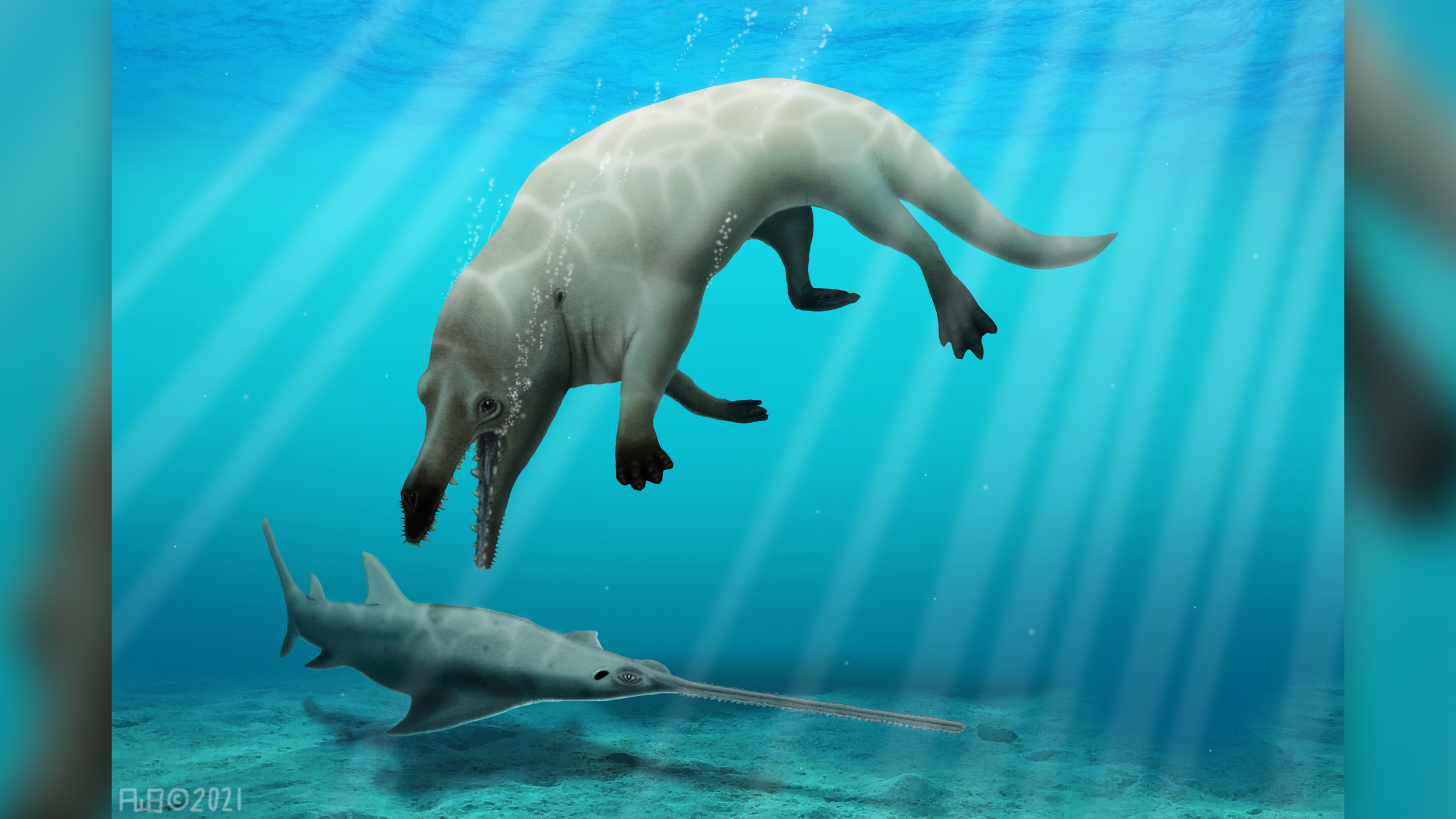
However, since the early 1990s, scientists take plant evidence from paleontology, developmental biology and genetics to support the idea that whales evolved from land mammals. These same lines of bear witness support the theory of development every bit a whole.
In the kickoff edition of "On the Origin of Species," Darwin speculated about how natural selection could crusade a land mammal to plow into a whale. As a hypothetical example, Darwin used North American black bears (Ursus americanus), which were known to take hold of insects by swimming in the h2o with their mouths open, according to the Darwin Correspondence Project (opens in new tab).
"I can run across no difficulty in a race of bears being rendered, by natural pick, more aquatic in their structure and habits, with larger and larger mouths, till a animal was produced as monstrous as a whale," he speculated.
The thought didn't go over very well with the public or with other scientists. Darwin was so embarrassed by the ridicule he received (opens in new tab) that the pond-bear passage was removed from afterwards editions of the book. Scientists now know that Darwin had the correct idea but the wrong animal. Instead of looking at bears, he should have been looking at cows and hippopotamuses.
Other theories of development
Darwin wasn't the first or only scientist to develop a theory of evolution. Around the same time as Darwin, British biologist Alfred Russel Wallace independently came up with the theory of evolution by natural pick, co-ordinate to the Natural History Museum (opens in new tab). Nonetheless this had little impact.
"The concept of development as a historical event was a hot topic among biologists and geologists prior to Darwin'due south book considering there was so much evidence accumulating, only I suspect biological evolution hadn't really impinged on people outside of the academic bunker," Dr. P John D. Lambshead, a retired science research leader in marine biodiversity, ecology, and evolution at The Natural History Museum, London, told All About History Magazine (opens in new tab). "As long as science knew of no mechanism to explain how development happened it could exist safely dismissed as a crank idea."
Meanwhile, French biologist Jean-Baptiste Lamarck proposed that an organism could pass on traits to its offspring, though he was wrong about some of the details, according to the University of California'south Museum of Paleontology (opens in new tab).
Like Darwin, Lamarck believed that organisms adjusted to their environments and passed on those adaptations. He thought organisms did this by changing their behavior and, therefore, their bodies — like an athlete working out and getting buff — and that those changes were passed on to offspring.
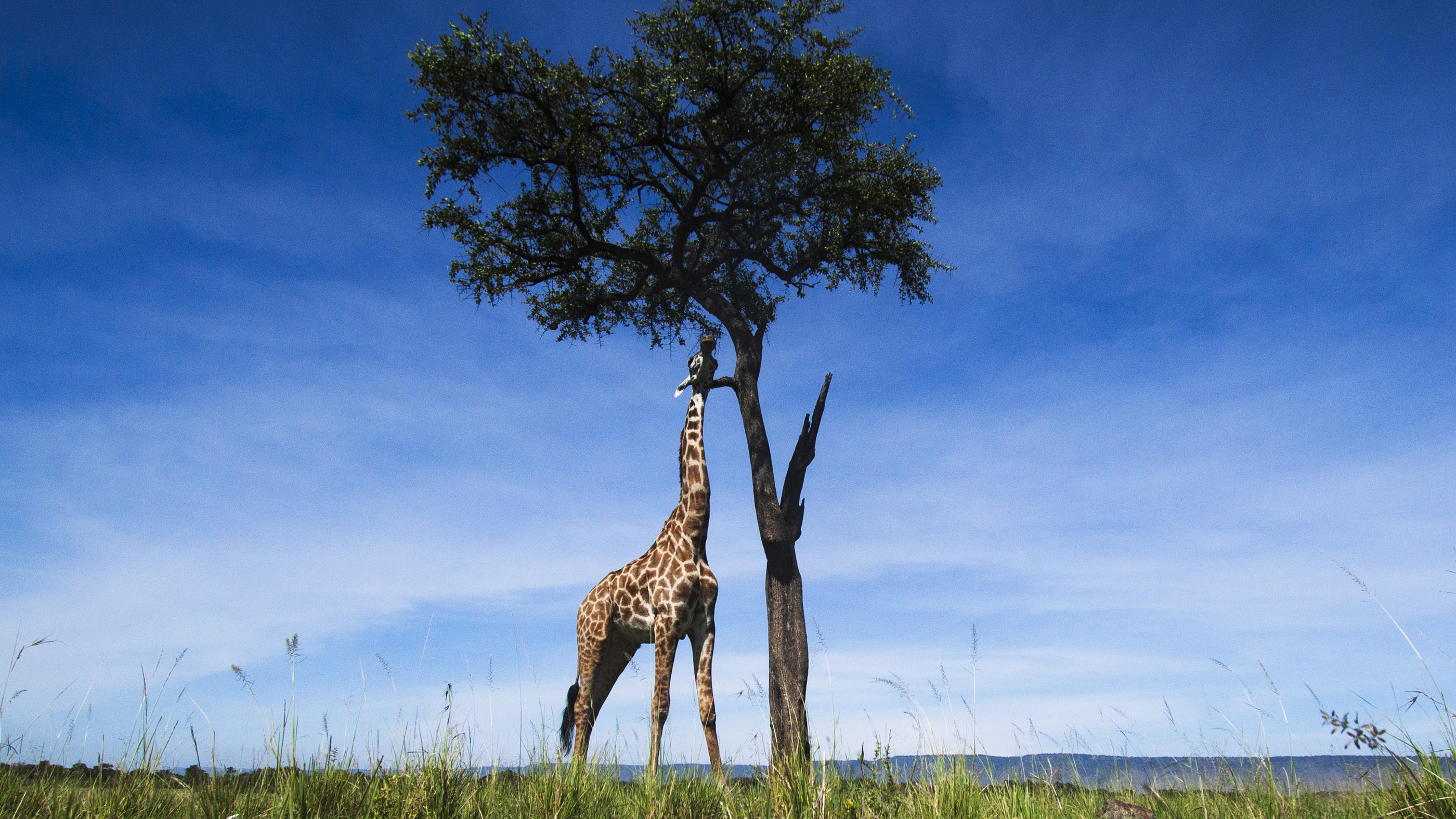
(opens in new tab)
For example, Lamarck thought that giraffes originally had shorter necks but that, equally trees around them grew taller, they stretched their necks to achieve the tasty leaves and their offspring gradually evolved longer and longer necks. Lamarck also believed that life was somehow driven to evolve through the generations from simple to more than complex forms, according to Understanding Evolution (opens in new tab), an educational resource from the University of California Museum of Paleontology (opens in new tab).
Though Darwin wasn't certain of the mechanism by which traits were passed on, he did non believe that evolution necessarily moved toward greater complication, according to Understanding Evolution — rather, he believed that complexity arose through natural selection.
A Darwinian view of giraffe evolution, according to Quanta Magazine (opens in new tab), would exist that giraffes had natural variation in their neck lengths, and that those with longer necks were improve able to survive and reproduce in environments total of alpine trees, so that subsequent generations had more than and more than long-necked giraffes.
The main divergence between the Lamarckian and Darwinian ideas of giraffe evolution is that there'due south nothing in the Darwinian caption about giraffes stretching their necks and passing on an acquired characteristic.
What is modernistic evolutionary synthesis?
According to Pobiner, Darwin did not know anything nearly genetics. "He observed the pattern of development, but he didn't really know near the mechanism," she said. That came later, with the discovery of how genes encode different biological or behavioral traits, and how genes are passed downwards from parents to offspring. The incorporation of genetics into Darwin's theory is known as "modernistic evolutionary synthesis."
The physical and behavioral changes that make natural choice possible happen at the level of Dna and genes within the gametes, the sperm or egg cells through which parents laissez passer on genetic material to their offspring. Such changes are chosen mutations. "Mutations are basically the raw material on which evolution acts," Pobiner said.
Mutations can be acquired by random errors in DNA replication or repair, or by chemical or radiations damage, according to Nature Teaching (opens in new tab). Normally, mutations are either harmful or neutral, but in rare instances, a mutation might show benign to the organism. If so, it will become more prevalent in the side by side generation and spread throughout the population.
In this fashion, natural selection guides the evolutionary process, preserving and adding up the beneficial mutations and rejecting the bad ones. "Mutations are random, but pick for them is non random," Pobiner said.
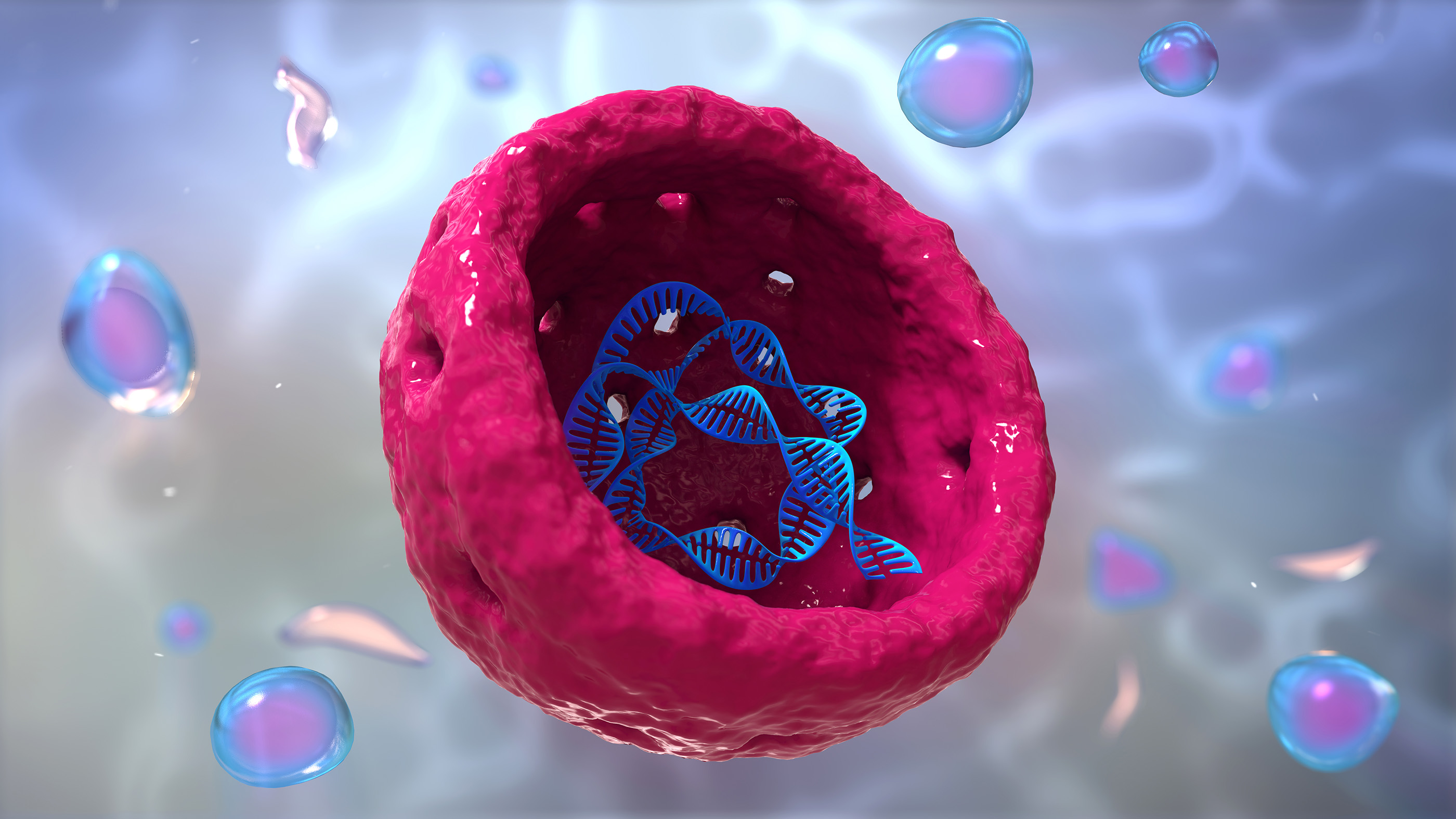
But natural choice isn't the only mechanism by which organisms evolve, she said. For instance, genes can be transferred from 1 population to some other when organisms migrate or immigrate — a process known as gene menstruum. And the frequency of certain genes tin also change at random, which is called genetic migrate.
The reason Lamarck's theory of development is generally wrong is that caused characteristics don't impact the DNA of sperm and eggs. A giraffe'southward gametes, for example, aren't afflicted past whether it stretches its neck; they only reflect the genes the giraffe inherited from its parents. But as Quanta reported (opens in new tab), some aspects of evolution are Lamarckian.
For instance, a Swedish study published in 2002 in the European Journal of Human Genetics (opens in new tab) institute that the grandchildren of men who starved as children during a famine passed on better cardiovascular health to their grandchildren. Researchers hypothesize that although experiences such as food deprivation don't change the Dna sequences in the gametes, they may result in external modifications to DNA that plough genes "on" or "off."
Such changes, called epigenetic changes, do not change the actual DNA sequence itself. For case, a chemic modification called methylation can bear upon which genes are turned on or off. Such epigenetic changes can be passed down to offspring. In this way, a person'due south experiences could affect the DNA he or she passes downward, analogous to the way Lamarck thought a giraffe craning its neck would affect the neck length of its offspring.
What is the evidence for evolution?
The Theory of Evolution is ane of the best-substantiated theories in the history of scientific discipline. It is supported by bear witness from a wide variety of scientific disciplines, including genetics, which shows that different species have similarities in their Deoxyribonucleic acid.
There is also evidence supporting the Theory of Evolution in paleontology and geology. This is through the fossil record, which shows how that species that existed in the by are dissimilar from those nowadays today, co-ordinate to Bruce Due south. Lieberman and Roger Fifty. Kaesler in "Prehistoric Life: Evolution and the Fossil Record (opens in new tab)" (Wiley, 2010).
There is as well testify for Darwin'southward theory found in developmental biology. It has been discovered that species that seem very different as adults pass through similar stages of embryological development, suggesting a shared evolutionary by, according to the open-admission textbook "Concepts of Biology (opens in new tab)."
Testify for whale evolution from paleontology
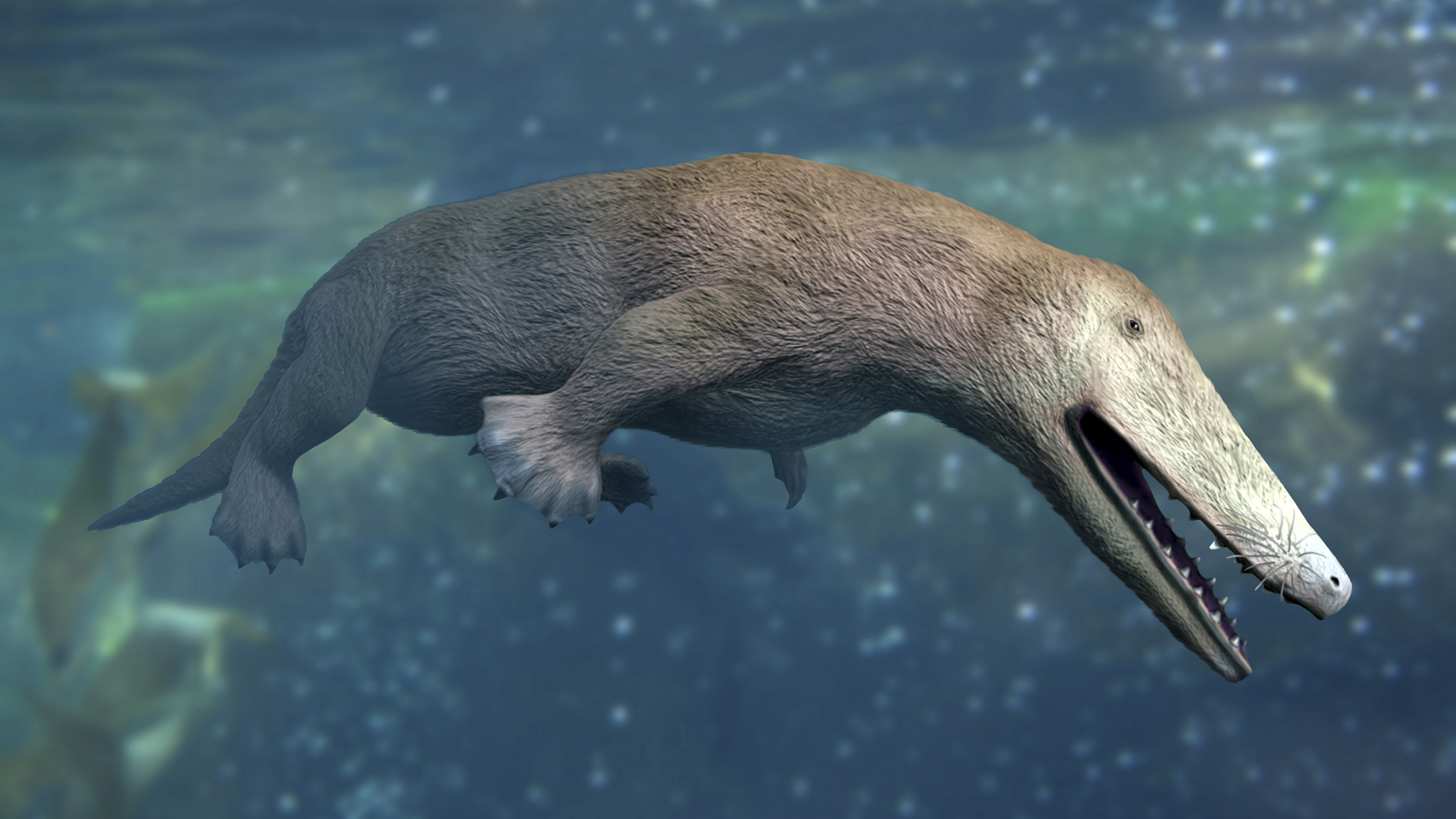
(opens in new tab)
The critical piece of evidence was discovered in 1994, when paleontologists constitute the fossilized remains of Ambulocetus natans, which means "swimming-walking whale," according to a 2009 review published in the periodical Evolution: Education and Outreach (opens in new tab). Its forelimbs had fingers and small hooves, just its hind feet were enormous relative to its size. The fauna was clearly adjusted for pond, but information technology was too capable of moving clumsily on state, much like a seal.
When it swam, the ancient creature moved like an otter, pushing dorsum with its hind anxiety and undulating its spine and tail.
Modern whales propel themselves through the water with powerful beats of their horizontal tail flukes, but A. natans notwithstanding had a whip-similar tail and had to apply its legs to provide near of the propulsive force needed to move through h2o.
In contempo years, more and more of these transitional species, or "missing links," have been discovered, lending further support to Darwin's theory. For example, in 2007, a geologist discovered the fossil of an extinct aquatic mammal, chosen Indohyus (opens in new tab), that was about the size of a cat and had hooves and a long tail.
Scientists retrieve the animal belonged to a group related to cetaceans such as Ambulocetus natans. This creature is considered a "missing link" betwixt artiodactyls — a group of hoofed mammals (fifty-fifty-toed ungulates) that includes hippos, pigs, and cows — and whales, according to the National Science Foundation (opens in new tab).
Researchers knew that whales were related to artiodactyls, simply until the discovery of this fossil, there were no known artiodactyls that shared physical characteristics with whales. Later on all, hippos, idea to exist cetaceans' closest living relatives, are very unlike from whales. Indohyus, on the other hand, was an artiodactyl, indicated by the structure of its hooves and ankles, and it too had some similarities to whales, in the structure of its ears, for case.
Evidence for whale development from genetics & developmental biology
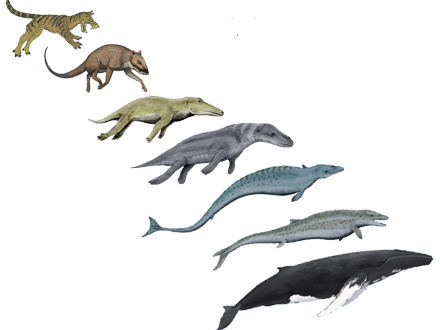
Genetic bear witness also supports the thought that whales evolved from country mammals and provides information nearly the verbal branching of the evolutionary tree. For instance, in 1999, researchers reported in the periodical Proceedings of the National Academy of Sciences (opens in new tab) that according to genetic analysis of "jumping factor" sequences, which copy and paste themselves into genomes, hippos were whales' closest living relatives. Before 1985, researchers thought pigs were more closely related to whales, but this 1999 study overturned that idea, as the Associated Printing (opens in new tab) reported.
In 2019, researchers reported in the journal Scientific discipline Advances (opens in new tab) well-nigh which genes within the whale genome were inactivated during the process of the creature's development from state mammals, as Science Friday (opens in new tab) reported. The researchers could tell that sure genes, including 1 involved in making saliva, had been inactivated considering there are remnants of them, which the researchers call genomic fossils, in whale genomes. This indicates that whales evolved from a salivating creature.
At that place'southward also testify of cetacean evolution from developmental biology. Developmental biology illustrates the fact that animals that are very different as adults share similarities as embryos considering they are evolutionarily related. For case, equally embryos, cetaceans started to develop hind limbs, which disappear later in evolution, while the forelimbs remain and develop into flippers, co-ordinate to the journal Evolution: Educational activity and Outreach (opens in new tab). This suggests that cetaceans evolved from a four-legged antecedent.
Is the theory of evolution controversial?
Despite the wealth of evidence from the fossil tape, genetics and other fields of scientific discipline, some people nevertheless question the theory of evolution's validity. Some politicians and religious leaders denounce the theory, invoking a college beingness as a designer to explain the circuitous world of living things, especially humans.
School boards debate whether the theory of evolution should be taught alongside other ideas, such as intelligent pattern or creationism.
Mainstream scientists see no controversy. "A lot of people accept deep religious behavior and besides take evolution," Pobiner said, adding, "in that location can be real reconciliation."
Evolution is well supported by many examples of changes in diverse species leading to the multifariousness of life seen today. "Natural choice, or to put it another way — variation, heredity, and differential fitness — is the cadre theory of modernistic biological science," John Lambshead explains. "It is to biological science what, say quantum mechanics and special relativity are to physics or the atomic model is to chemistry."
Additional reporting past contributors Alina Bradford, Ashley P. Taylor and Callum McKelvie
Additional resources
- The National Oceanic and Atmospheric Administration (opens in new tab) has a presentation on whale evolution.
- To read the theory in its original form, come across Darwin's book, "On the Origin of Species (opens in new tab)."
- Check out this article (opens in new tab) for an overview of natural option.
- To sympathise the difference between a theory and fact, see this National University of Sciences website (opens in new tab).
Darwin's Theory Of Evolution Book,
Source: https://www.livescience.com/474-controversy-evolution-works.html
Posted by: adamswaaked.blogspot.com


0 Response to "Darwin's Theory Of Evolution Book"
Post a Comment